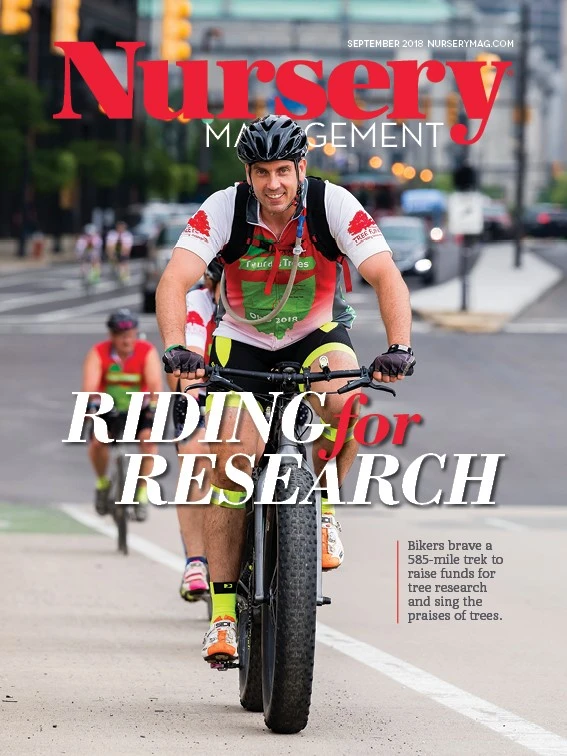When Briggs Nursery in Elma, WA trains employees on equipment, the company always includes a safety element. For some pieces of equipment, they have safety and operating checklists that a supervisor will go over with the employee and have them sign. That paper is then made part of their personnel file.
“Each crew lead and supervisor is responsible for making sure that the SOPs (standard operating procedures) are followed and the equipment is used in a safe manner,” says Kurt Hadaller, facilities manager at Briggs Nursery. “The equipment is inspected every day for any mechanical issues or defects, and if any are found, that piece is placed out of service until the issue is fixed.”
All new employees receive general motor equipment safety training, including large equipment such as tractors, utility vehicles, and so on. There is a checkoff sheet used to make sure that every employee has similar training.

Because tractors and other machines are more visible at the nursery, incidents of employees not following SOPs are more obvious and reported to the supervisor, where corrective action is taken. This includes verbal warnings, retraining, written warnings and in some instances dismissal for unsafe practices.
While Alameda Wholesale Nursery in Denver, CO, a 72-year-old company with 65 year-round employees and 30 seasonal employees, doesn’t have any formal SOPs when it comes to motor equipment and vehicle safety, every employee does attend annual video training on pesticide safety. The only exception is forklift operation and chemical application, for which there are formal SOPs.
“We just have one center of operation, which is on 34 acres,” says Stan Brown, president of Alameda Wholesale Nursery. “It is up to the individual foreman to train and supervise their crew. We have seven partners active in the business along with other foremen here who all keep their eye out for unsafe conditions. All of them are expected to recognize situations which may become unsafe and can and do stop any actions necessary.”
Adds Brown, “While one injury is one too many, we have been very fortunate with our safety record.”
One way to prevent accidents relating to motor vehicles, according to Caterpillar Inc., is visibility.
“Visibility is key to assisting in the prevention of interactions between the machine and a pedestrian or employee,” says John Janes, Caterpillar’s industry marketing representative, Building Construction Products Division. “Visibility enhancements on Cat skid steers include backup cameras and increased visibility through the sides and front. Cat compact wheel loaders additionally have increased visibility.”
Zachery Bruce, safety services manager with horticultural insurer Hortica®, underscores the importance of comprehensive training.
“Make sure your people are properly trained and understand how to use equipment safely,” says Bruce. “The best companies have a robust training program to make sure employees are staying safe.”
Exclusively sponsored by

Hortica® property and casualty coverages are underwritten, and loss control services are provided, by Florists' Mutual Insurance Company and Florists' Insurance Company, members of the Sentry Insurance Group. For more information, visit hortica.com. Policies, coverages, benefits

Explore the September 2018 Issue
Check out more from this issue and find your next story to read.
Latest from Nursery Management
- Plant breeding as an art
- Society of American Florists accepting entries for 2025 Marketer of the Year Contest
- Sustainabloom launches Wholesale Nickel Program to support floriculture sustainability
- American Horticultural Society welcomes five new board members
- Get to know Christopher Brown Jr. of Lancaster Farms
- American Floral Endowment establishes Demaree Family Floriculture Advancement Fund
- The Growth Industry Episode 3: Across the Pond with Neville Stein
- The Growth Industry Episode 2: Emily Showalter on how Willoway Nurseries transformed its business





